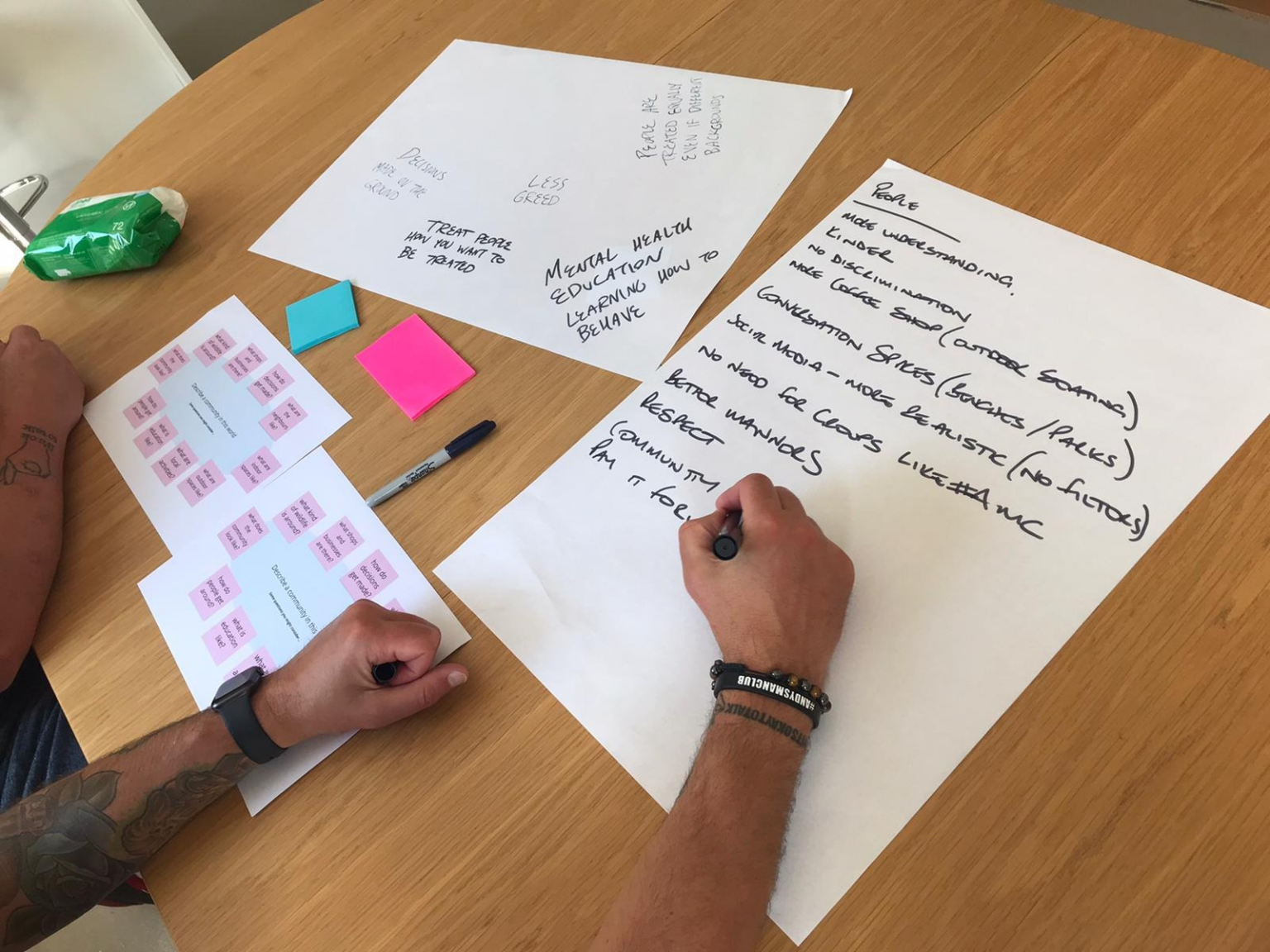Pat Joyce (he/him)

My approach to design is informed by my background in psychology, sociology, and politics, as well as my experiences working in labour and service industries in Canada, Australia, and the UK. To me, design is the art of detail. My design interventions delve into the detail of people’s interactions with and understandings of civic and social systems in order to bring people closer to the issues that affect their lives.
Raised in a rural, working-class region of Canada, I am conscious of the space between the academy and the many different types of people that scholarship endeavours to serve. I believe that design’s power lies in its ability to bring people into the fold and bridge the gap between academia and the everyday. In this ethos, I see my role as designer as that of translator: facilitating knowledge-sharing to understand the ways people and systems interact and using this knowledge to design co-creative processes that prompt speculation and imagination of alternatives.

Growing Masculinities: Speculation, Reflexivity, and Masculine Spaces
This project, a feminist-influenced exploration of masculinities, aims to create spaces and provide tools for men to contemplate, critique, and contest normative ideals of masculinity and to engage men in the development of feminist blueprints for healthy masculinities.
Using a speculative design methodology and iterative process through a series of pilot workshops, I propose a method that serves to foster reflexive conversations among men on the nature and experience of masculinity. I go on to discuss the potential evolution of this method toward a multi-modal exploration of masculine experience, underpinned by a theoretical understanding of masculinities as multi-dimensional and dynamic. Through the use of co-creative engagement tools, this project endeavours to create spaces and offer reflexive tools for men to contemplate, critique, and contest normative masculinity.



Visualisation of Reflexivity and Expansion of Male Identity

Workshop Participants

Modality Matrix
Phronopolis
The pandemic has offered an opportunity to re-think the ways in which citizens and organisations serve communities. The primary driver of community resiliency, tested during successive lockdowns in the UK and worldwide, is the presence of thick networks tied to community anchor organisations with the capacity to support citizen-led endeavours.
Inspired by the emergence of mutual aid and informal support networks in communities throughout Glasgow, I used a speculative making process informed by expert interviews to imagine ‘post-pandemic citizenship’ and design vignettes of five anchor organisations within a speculative ‘wise city’ framed by principles of feminist solidarity economies.



Speculative Diary

Takes a Village
Dancing with the Past: Connecting Communities Across Time
‘Dancing with the Past’ is a local engagement tool to create spaces for interaction with historical and contemporary local knowledge expressed through performance and movement. Engagement with a local community, its people, and its history creates a sense of connection to place that allows and encourages long-term thinking.
When people lack a sense of connection, particularly a connection to present place, it becomes more difficult to consider and make decisions with the long term in mind. The sharing of local knowledge can foster this sense of connection but can be inaccessible to those not already embedded in communities, making it challenging to ‘place’ oneself in the long-term future.
‘Dancing with the Past’ fosters community engagement through dance, using archived footage projected via multi-dimensional techniques to allow new types of intergenerational interaction within public spaces.


Research Findings








